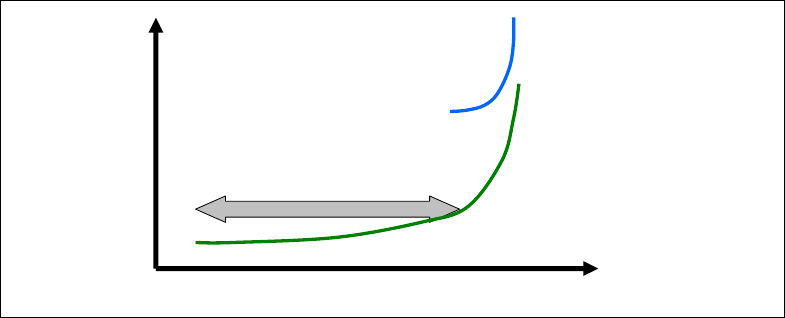
208 IBM PureFlex System and IBM Flex System Products and Technology
You have a great deal of control over Active Memory Expansion usage. Each individual AIX
partition can turn on or turn off Active Memory Expansion. Control parameters set the amount
of expansion wanted in each partition to help control the amount of processor used by the
Active Memory Expansion function. An IBM Public License (IPL) is required for the specific
partition that is turns memory expansion on or off. After being turned on, there are monitoring
capabilities in standard AIX performance tools, such as lparstat, vmstat, topas, and svmon.
Figure 5-40 represents the percentage of processor used to compress memory for two
partitions with various profiles. The green curve corresponds to a partition that has spare
processing power capacity. The blue curve corresponds to a partition constrained in
processing power.
Figure 5-40 Processor usage versus memory expansion effectiveness
Both cases show a knee of the curve relationship for processor resources required for
memory expansion:
Busy processor cores do not have resources to spare for expansion.
The more memory expansion that is done, the more processor resources are required.
The knee varies, depending on how compressible the memory contents are. This variability
demonstrates the need for a case by case study to determine whether memory expansion
can provide a positive return on investment. To help you perform this study, a planning tool is
included with AIX 6.1 Technology Level 4 or later. The tool allows you to sample actual
workloads and estimate both how expandable the partition memory is and how much
processor resource is needed. Any Power System model runs the planning tool.
% CPU
utilization
for
expansion
Amount of memory expansion
1 = Plenty of spare
CPU resource available
2 = Constrained CPU
resource – already
running at significant
utilization
1
2
Very cost effective





